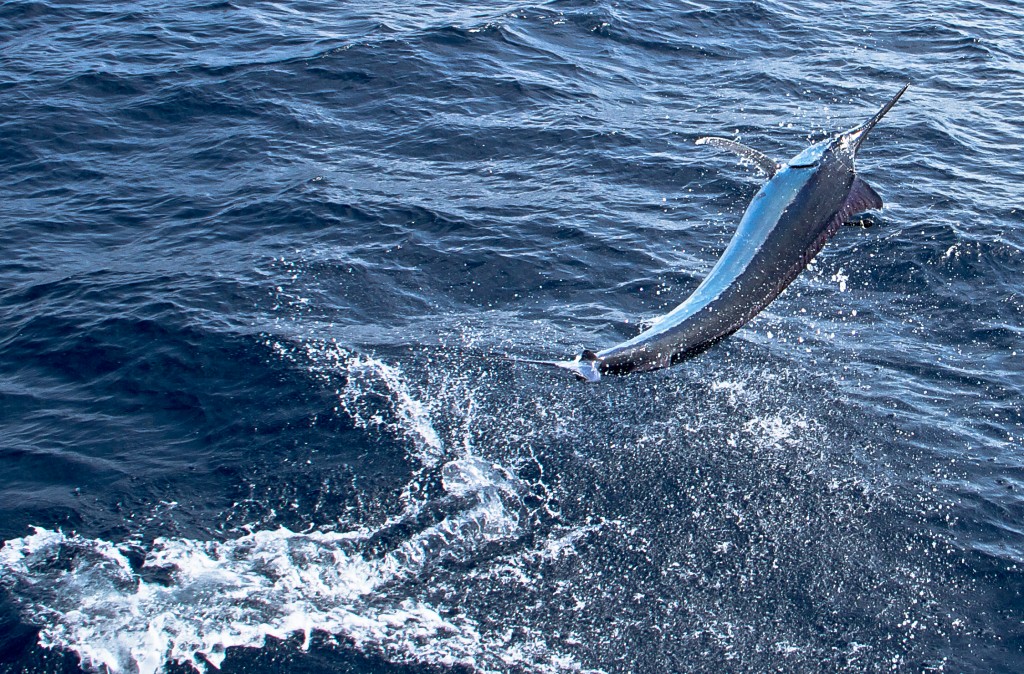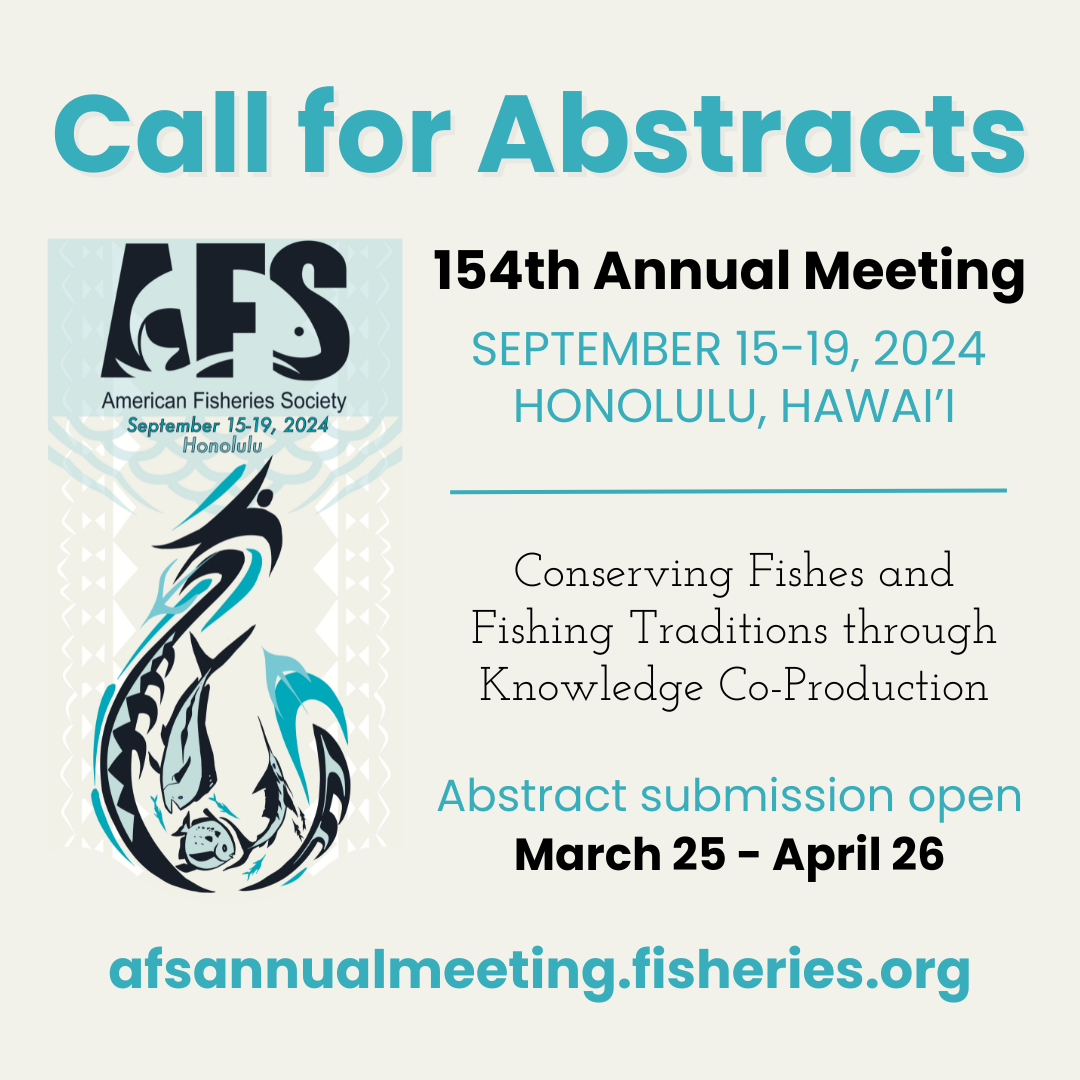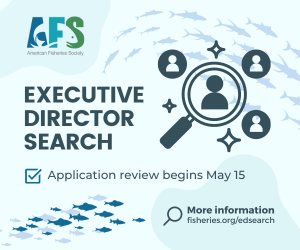By Leah Baumwell, IGFA Conservation Coordinator, Email: [email protected]

“I wonder why he jumped, the old man thought. He jumped
almost as though to show me how big he was.”
—Ernest Hemingway, The Old Man and the Sea
Collectively referred to as “billfish,” marlin, sailfish, and spearfish (family Istiophoridae) are some of the largest and most magnificent fish that roam the ocean. Distinguished by their sleekly shaped bodies and long bills used for slashing and stunning prey, billfishes swim at extraordinary speeds and can propel themselves out of the water to heights of over ten feet! Because of their size, elusiveness, and tremendous fighting power, they are treasured by anglers around the world.
As pelagic, apex predators, billfishes also play a vital role in maintaining healthy marine ecosystems, but their highly migratory nature provides unique challenges for management. Unfortunately, the latest stock assessments indicate that Striped Marlin Kajikia audax are overfished and subject to overfishing (IOTC 2015), Blue Marlin Makaira nigricans and White Marlin Kajikia albida are in an overfished condition (IOTC2015; ICCAT 2016), Black Marlin Istiompax indica and Indo-Pacific Sailfish Istiophorus platypterus are subject to overfishing (IOTC 2015), and the stock status for Atlantic Sailfish Istiophorus albicans remains uncertain (ICCAT 2016). Therefore, information on billfish habitat use is fundamental to understanding their ecology and population dynamics, and is needed for improved management strategies. Enter the IGFA Great Marlin Race (IGMR), a partnership between the International Game Fish Association (IGFA) and Stanford University.
This revolutionary billfish satellite-tagging program joins recreational anglers with satellite tag technology to investigate the biology and ecology of billfish by examining how they utilize their open ocean habitat. The concept is simple: angling teams are invited to sponsor satellite tags for marlin that are caught and released during billfish tournaments, and the team whose individual marlin swims the farthest distance is declared the winner. Although the tags are expensive, IGMR tournaments often provide incentives (e.g., like free entry for the next year) for the winners. We have also found that recreational anglers are willing to sponsor tags because they are curious about where their tagged marlin will travel and interested in helping collect data that can be used to protect the future of their sport.
In the IGMR, we program Wildlife Computer’s mini pop-up archival satellite tags (miniPATs) to collect data on billfish for 240 days before they pop off and transmit the data via Argos satellites. When all the data are received from a tag, a series of plots are generated to visualize marlin temperature and depth preferences, diving behaviors, and water column conditions. Our partners at Stanford University then use light-based geolocation data derived from the tag to construct an initial movement track for the animal. The track is further refined using a state space model, which employs a mathematical algorithm to draw a statistically robust, “best fit” track through the light-based geolocation points. The final track is then made available to each sponsor and the public through interactive Google Earth views on our IGMR website.
The IGMR has grown to become one of the world’s largest citizen science billfish satellite tagging projects. Since the program began in 2011, 236 tags have been placed on 134 Blue Marlin, 66 Black Marlin, 6 White Marlin, 16 Striped Marlin, 7 Sailfish, and 7 Spearfish during 33 events in 20 countries. Combined, these fish have traveled a total of 116,921 nautical miles (nm) and counting! Just this past year, a tag popped up 1,700 nm off the coast of Chile to reveal that a 499 kg Black Marlin tagged off the coast of Queensland, Australia, swam 5,716 nm across the Pacific Ocean, almost reaching South America in just 180 days (31.8 nm/day)! Not only is this the longest linear distance ever recorded in the IGMR, but to our knowledge, this is the longest movement distance recorded on a billfish by an electronic tag. The IGMR embodies citizen science at its best, where non-scientist recreational anglers, actively fund, facilitate, and collect data for science.
Moreover, the data are being put to good use: our partners at Stanford have submitted the first scientific manuscript from the IGMR for publication in a peer-reviewed journal(Carlisle et al. in review). Using the data from the first five tagging years during the Hawaiian International Billfish Tournament (2009- 2013), the study explores the effects of low oxygen and low temperature on the vertical and horizontal movements of Pacific Blue Marlin. The findings suggest that as low oxygen and low temperature conditions occur at shallower depths, the marlin stop diving as deeply. They also suggest that the decrease in temperature in equatorial waters (a characteristic associated with La Niña conditions) could create a barrier to southward trans-equatorial movement, which could potentially lead to a break in marlin populations between the northern and southern hemispheres. This may be important if there is an increase in frequency and intensity of the El Niño/La Niña cycle as the Pacific Ocean continues to warm.
A unique benefit of the IGMR is that all of the tag data are completely open-access. We feel that making this information available to all who are interested in billfish migration will expand the support for international conservation measures. It is our hope that, over time, we will more fully understand marlin migratory patterns, vertical habitat use, and the oceanographic conditions that influence their distribution. This, in turn, will lead to effective management strategies to preserve the future of these magnificent sportfish.
For more information on the IGFA Great Marlin Race, please visit www.igfa.org/Conserve/IGMR.aspx.
REFERENCES
ICCAT (International Commission for the Conservation of Atlantic Tunas). 2016. Stock assessments. Available: www.iccat.int/en/assess.htm. (February 2016).
IOTC (Indian Ocean Tuna Commission). 2015. Status summary for species of tuna and tuna-like species under the IOTC mandate, as well as other species impacted by IOTC fisheries. Available: www.iotc.org/science/status-summary-species-tuna-and-tunaspecies-under-iotc-mandate-well-other-species-impacted-iotc (February 2016).
Members click below for the April 2016 Fisheries magazine’s complete issue. Non-members, join here.
This content is for members only. Please login.






